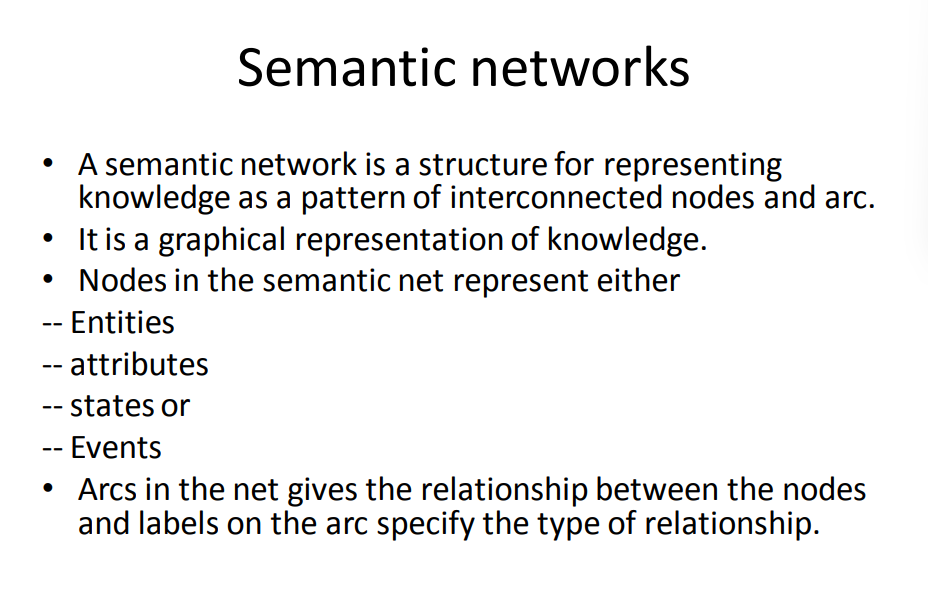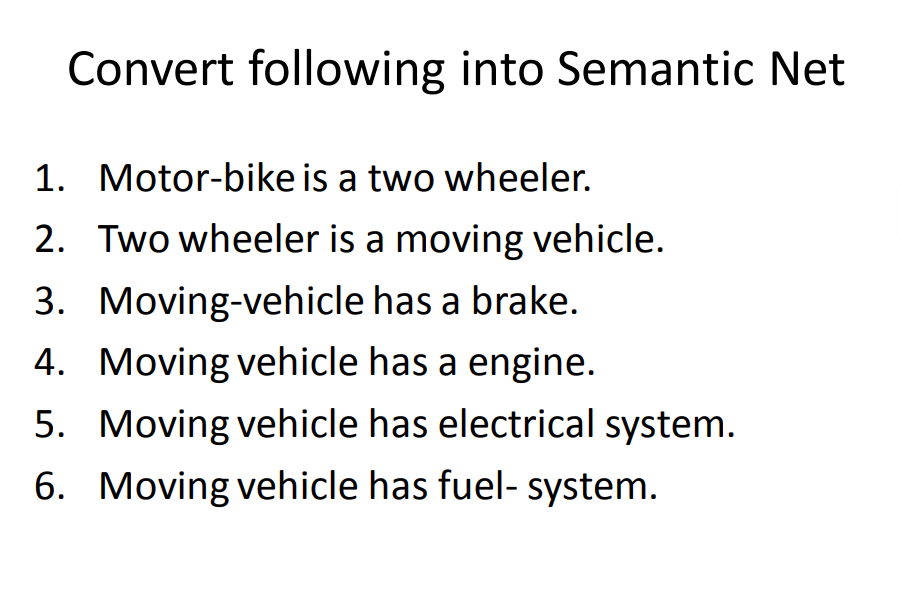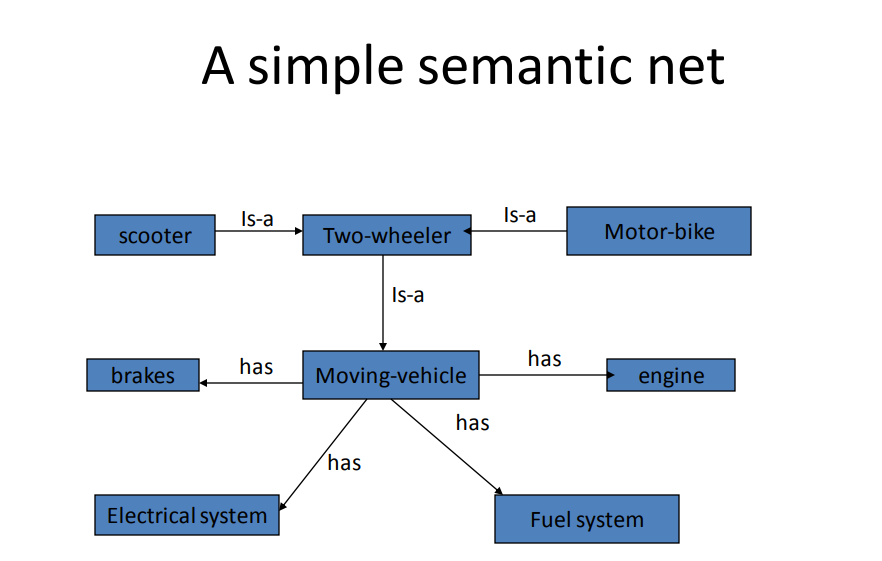
A Semantic network is a graphical representation of knowledge in artificial intelligence and cognitive science. It is a form of knowledge representation that represents relationships between concepts or entities using nodes (also called concepts or entities) and labeled edges (also called links or relationships). Semantic networks are designed to capture the meaning or semantics of knowledge by representing the connections and associations between different concepts.
Key features and characteristics of semantic networks:
- Nodes or Concepts: Nodes in a semantic network represent concepts, entities, or objects in the domain being modeled. Each node typically has a unique identifier and may contain additional attributes or properties associated with the concept it represents.
- Edges or Relationships: Edges in a semantic network represent relationships or connections between concepts. These relationships can be of different types, such as “is-a,” “part-of,” “has-property,” “related-to,” or any other meaningful association between concepts. The edges are labeled to indicate the type of relationship they represent.
- Directed or Undirected: Semantic networks can have directed or undirected edges. Directed edges indicate a specific direction or flow between concepts, while undirected edges represent bidirectional relationships or associations.
- Hierarchical Structure: Semantic networks often exhibit a hierarchical structure, where concepts are organized into levels or layers based on their generalization or specialization. This hierarchical organization allows for the representation of taxonomies and inheritance relationships between concepts.
- Network Navigation: Semantic networks support navigation and traversal operations, enabling the exploration of relationships between concepts. It allows for the retrieval of related concepts, identification of paths between concepts, and inference of new knowledge based on existing connections.
- Knowledge Representation: Semantic networks serve as a means to represent knowledge in a structured and graphical format. They capture the semantic relationships between concepts, providing a rich representation that can be used for various AI tasks such as reasoning, information retrieval, natural language processing, and expert systems.
- Advantages: Semantic networks facilitate intuitive and visual representation of knowledge, making it easier for humans to understand and interpret. They allow for the integration of diverse information sources and support the inference of new knowledge based on existing relationships.
- Limitations: Semantic networks can become complex and difficult to manage when dealing with large knowledge domains. Representing uncertain or probabilistic relationships can be challenging, and the scalability of inference processes may be a concern.
Semantic networks have been widely used in AI applications such as expert systems, knowledge-based systems, ontologies, and natural language understanding. They provide a flexible and expressive framework for organizing and representing knowledge, facilitating effective reasoning and knowledge-based decision-making processes.


